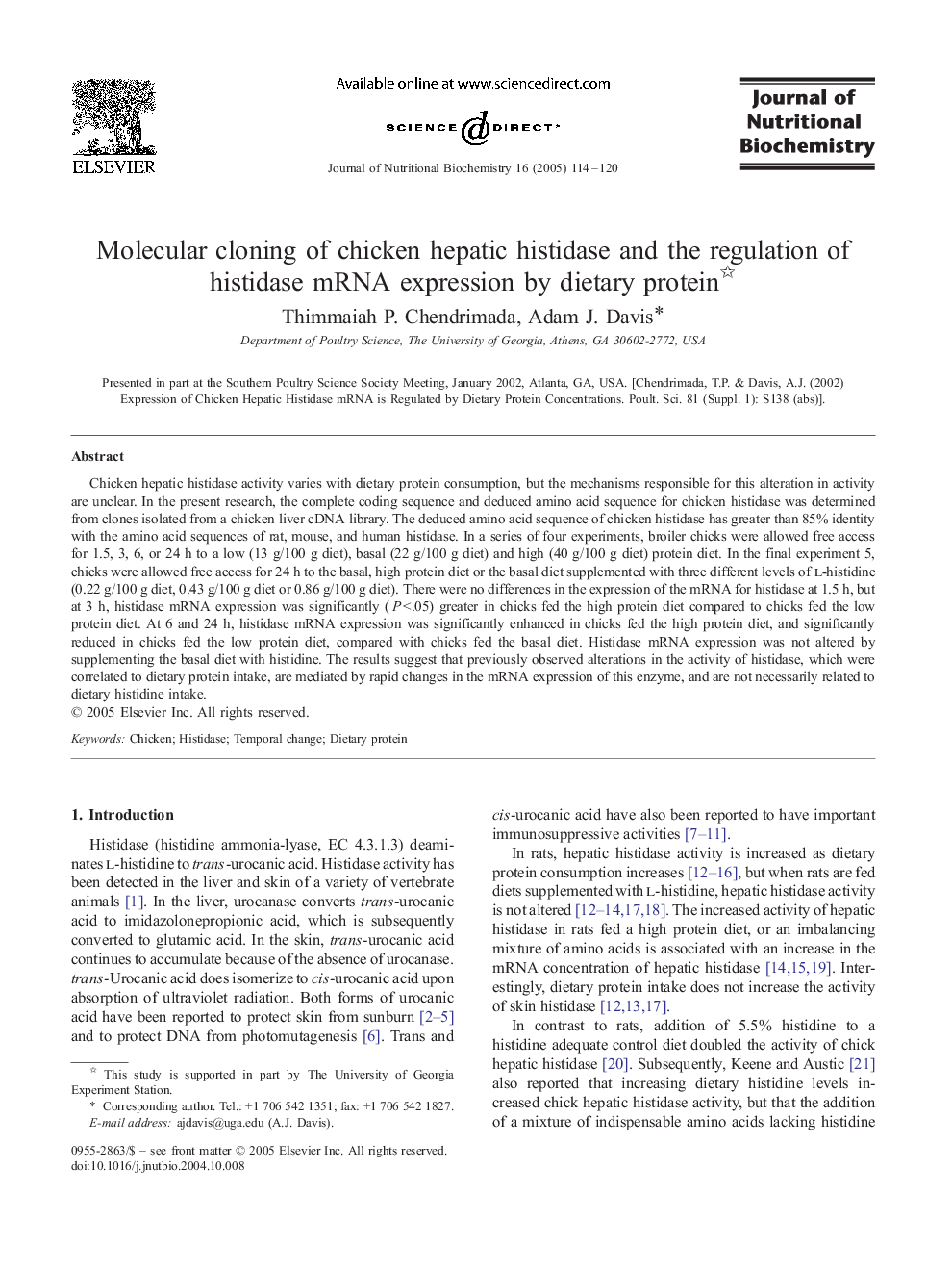| Article ID | Journal | Published Year | Pages | File Type |
|---|---|---|---|---|
| 9891607 | The Journal of Nutritional Biochemistry | 2005 | 7 Pages |
Abstract
Chicken hepatic histidase activity varies with dietary protein consumption, but the mechanisms responsible for this alteration in activity are unclear. In the present research, the complete coding sequence and deduced amino acid sequence for chicken histidase was determined from clones isolated from a chicken liver cDNA library. The deduced amino acid sequence of chicken histidase has greater than 85% identity with the amino acid sequences of rat, mouse, and human histidase. In a series of four experiments, broiler chicks were allowed free access for 1.5, 3, 6, or 24 h to a low (13 g/100 g diet), basal (22 g/100 g diet) and high (40 g/100 g diet) protein diet. In the final experiment 5, chicks were allowed free access for 24 h to the basal, high protein diet or the basal diet supplemented with three different levels of l-histidine (0.22 g/100 g diet, 0.43 g/100 g diet or 0.86 g/100 g diet). There were no differences in the expression of the mRNA for histidase at 1.5 h, but at 3 h, histidase mRNA expression was significantly (P<.05) greater in chicks fed the high protein diet compared to chicks fed the low protein diet. At 6 and 24 h, histidase mRNA expression was significantly enhanced in chicks fed the high protein diet, and significantly reduced in chicks fed the low protein diet, compared with chicks fed the basal diet. Histidase mRNA expression was not altered by supplementing the basal diet with histidine. The results suggest that previously observed alterations in the activity of histidase, which were correlated to dietary protein intake, are mediated by rapid changes in the mRNA expression of this enzyme, and are not necessarily related to dietary histidine intake.
Related Topics
Life Sciences
Biochemistry, Genetics and Molecular Biology
Biochemistry
Authors
Thimmaiah P. Chendrimada, Adam J. Davis,
